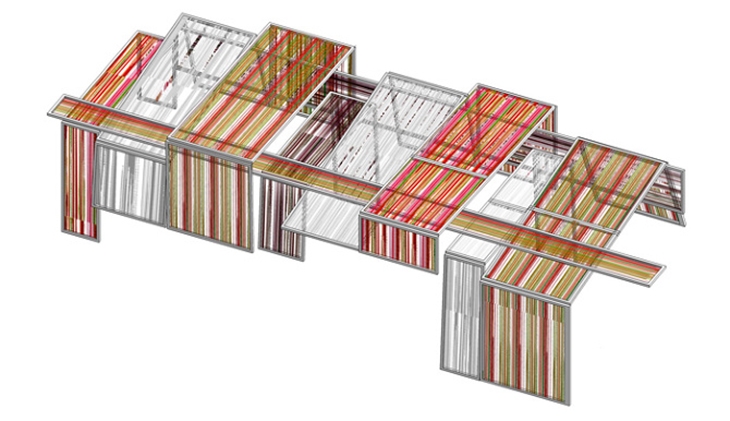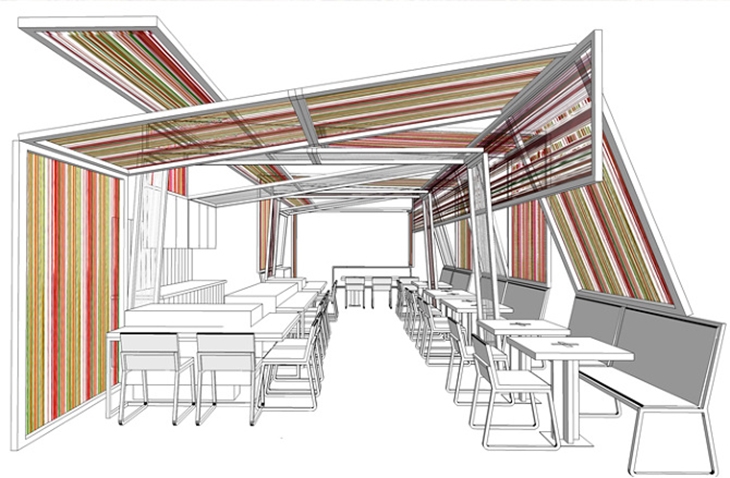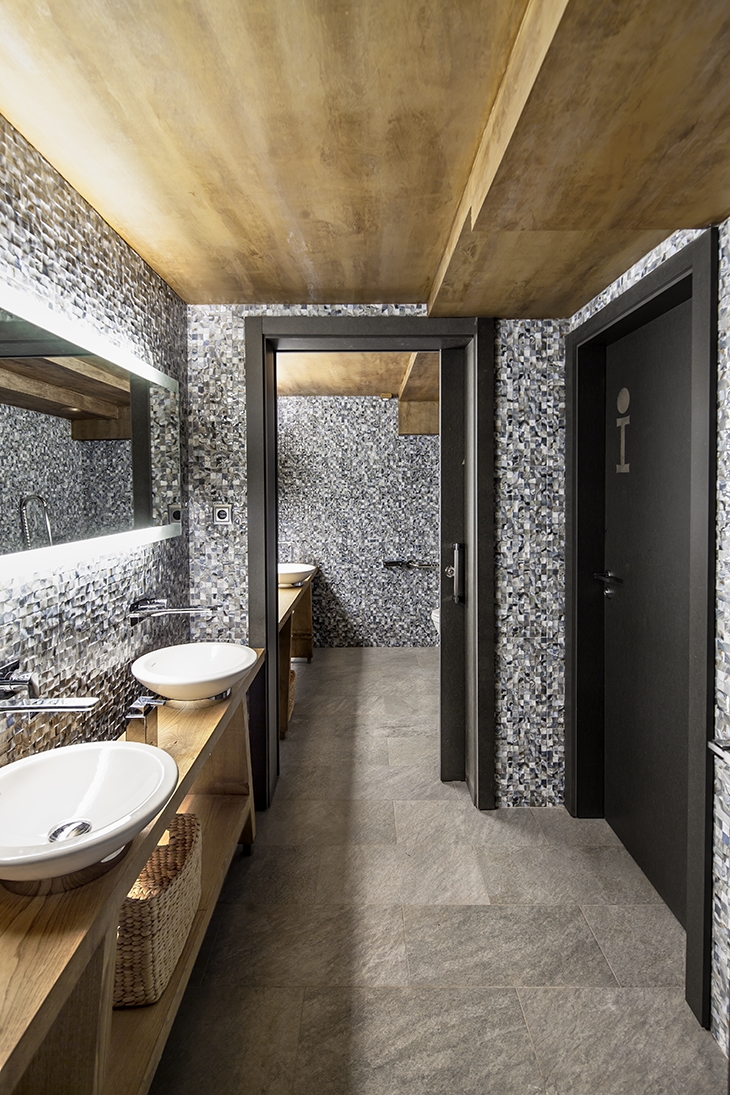Pakta means “union“ in the Quechua language of Peru: union of two cultures, union of two gastronomies. The interior design emerges from this same idea, considering that Japanese cuisine is the basis of the nikkei gastronomy but wrapped in Peruvian tastes, colors, traditions and ingredients. The basic elements of the restaurant such as the bars, the kitchen and the furniture are designed with a clear reference to the architecture of the traditional Japanese taverns. An explosion of colors evocative of Peru embraces the space like a second skin, achieved by the use of a direct reference to the Peruvian looms.
In the entrance, the sake and pisco bar acts as a filter between the interior and exterior of the venue. It is a three dimensional framework which serves as a shelf, visual filter and product display stand. Presiding over the dining area is the sushi bar. Structurally speaking, it is completely antagonistic to the sake and pisco bar as it is composed of three heavy, luminous stone pieces. Closing the space at the end of the dining area is the kitchen, conceived as a luminous box which allows the cooks inside to be observed through a layer of glass panels with different degrees of transparency.Using three different types of transversal sections, together with some longitudinal pieces, the looms embrace the space creating a changing colorful rhythm. The lighting is developed in collaboration with BMLD Lighting Design. The main goal is to create an atmosphere which will put the focus on the served dish and the food. The concept used for the lighting, “the fusion between dark and light, simplicity and color” is achieved by using dim light in some of the looms, thereby creating rhythm and dynamism.
 STRUCTURE
STRUCTURE STRUCTURE
STRUCTURE PHOTOGRAPHY (C) ADRIÀ GOULA
PHOTOGRAPHY (C) ADRIÀ GOULAREAD ALSO: VIVIFY THE BEAUTY LAB / BLLEND DESIGN OFFICE